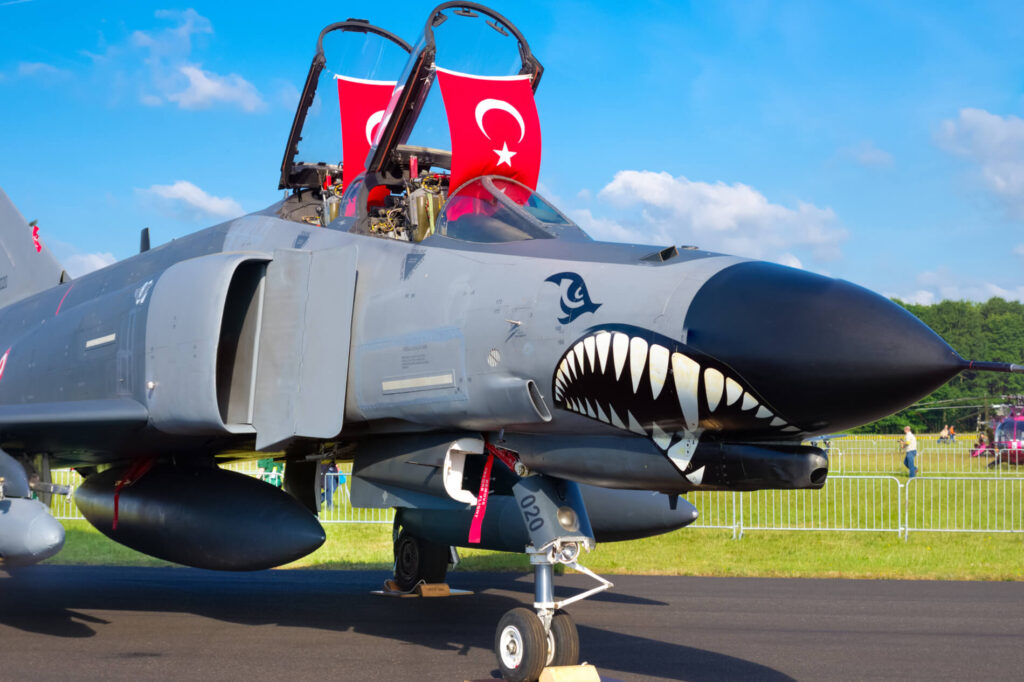After the dispute between Turkey and the United States about the procurement of the Russian S-400 missile system, Ankara’s participation in the F-35 program was canceled on July 18, 2019. But faced with the determination of its NATO ally to acquire the Russian weapon, Washington did not stop there.
On December 14, 2020, U.S. Secretary of State Mike Pompeo announced sanctions against the SSB, the agency of the Turkish Ministry of Defense in charge of arms contracts, within the frame of the Countering America’s Adversaries Through Sanctions Act (CAATSA). As such, Turkey will now be denied any export license from the United States.
The Turkish Air Force on the front line
While the Navy and Land Forces are equipped with a mix of German, American, and indigenous designs, the Air Force might be the branch to suffer the most from this decision. The Turkish air fleet is composed primarily of U.S.-made aircraft, such as the General Dynamics F-16 and the McDonnell Douglas F-4 for combat aircraft, the Lockheed C-130 Hercules for transport, the E-7T (based on the Boeing 737) as an Airborne Early Warning & Control aircraft, and the Boeing KC-135 for refueling. As for helicopters, they include the Bell UH-1 and the Sikorsky S-70.
Additionally to the country of origin, the aircraft present another obstacle ‒ their age. For example, Turkey’s youngest KC-135 is 58 years old. Despite several upgrades, one can imagine that such an ancient airframe requires a decent amount of maintenance. Without a consistent supply of parts, refueling, as well as other tasks critical for the operability, might become difficult. Procuring ammunition for the combatant aircraft, currently mostly acquired from the U.S., will likely be another challenge ahead.
While the Turkish military-industrial complex might be able to maintain the fleet in operational condition, renewing it without the support of the United States could also prove difficult in the future.
Shortly after the sanctions were announced, the Turkish Ministry of Foreign Affairs called for appeasement. “We call on the United States to reconsider this unfair sanctions decision and we reaffirm our readiness to deal with the matter through dialogue and diplomacy, in accordance with the spirit of the alliance [NATO],” it stated.
In the meantime, on December 15, 2020, Turkish President Recep Tayyip Erdogan discussed with the President of the European Council Charles Michel his wish to open a “new page” in Turkey’s relationship with the European Union. “We hope that the EU can adopt a constructive and common-sense attitude towards Turkey,” said the Turkish president.
As the shift deepens with its NATO allies and western partners, Turkey could find solace in Russia. In the past few years, Moscow made several proposals to support the equipment of the Turkish Air Force.
Kickstarting an indigenous design?
When the F-35 was rendered inaccessible, Turkey refocused its energy on the development of the indigenous TF-X fighter jet, which was announced as a replacement for the F-16 in 2016. The state-owned manufacturer Turkish Aerospace Industries (TAI) displayed a one-to-one mock-up of the TF-X for the first time at the Paris Air Show, on June 17, 2019.
After discussions of partnerships with Rolls-Royce and General Electric to procure an engine system for the program were likely interrupted by the row with the United States, Russia offered to supply critical parts for the program. In June 2020, Dmitry Shugayev, Director of the Russian Federal Service for Military-Technical Cooperation, revealed that an offer had been made to supply several critical parts, including engines, avionics, onboard systems, and the airframe. “There are potentially interesting areas where we could provide technical assistance given our experience in the design and production of modern aircraft,” Shugayev announced on Turkish television channel Ekoturk.

